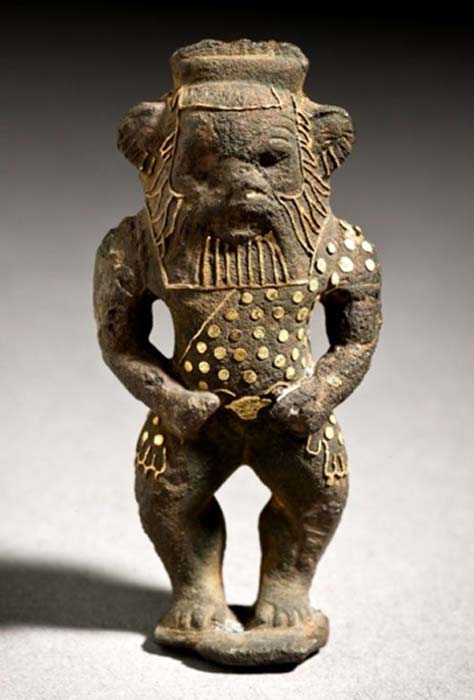
Birthing Trauma Comes from Two Million Years of Walking Upright
Birthing a human child is always painful and can be a drawn-out process threatening the lives of both mother and baby. The ordeal sometimes even lasts for days. However, chimps have a much easier job giving birth, usually over a few hours and without any assistance. So a team of scientists set out to answer why this is so.
To answer this evolutionary question a team of scientists have published a paper on PLOS ONE looking at how an ancient human relative gave birth on its own. According to lead author Dr. Natalie Laudicina, of the Department of Anthropology at Boston University, Boston, Massachusetts, Australopithecus sediba which lived around 1.95 million years ago in South Africa had a “relatively easy” birth process compared with modern humans.
Twist and Shout
In Australopithecus sediba, the scientists noted that the fetal head and shoulder breadth could amply pass through even the tightest dimensions of the maternal birth canal and the problems suffered by humans in today’s births arise from the size and shape of the modern pelvis, which is molded from the human’s need or requirement to walk upright.
- Medieval Woman Gave Birth AFTER Her Death
- The Evolution of Human Birth: An Incredible Story a Million Years in the Making
- The Horrific History Of Birthing Royal Babies, And Why Meghan Markle Should Be Grateful

(A-D) anterior, lateral, superior, and inferior views of the pelvis reconstruction of Australopithecus sediba. (Laudicina et al.)
What is more, a baby’s brain reaches about half of its adult size by nine months old and nearly three-quarters by two years of age, which, according to an article on Live Strong, occurs so that it can accommodate the rest of the body's growth, and this most often makes for a tight fit.
Another leading factor making it difficult for modern humans to give birth is the fact that rigid shoulders cannot pass through the changing shape of the birth canal without some rotation through the birth canal during labor, rather than popping straight out.

Ellipse representing a neonatal A. sediba head at the pelvic. A. inlet, frontal view B. inlet, superior view C. midplane, superior view. (Laudicina et al.)
Rotation of Pain
By studying ancient female pelvises from human-like relatives, researchers were able to get an idea of what the birth process must have been like millions of years down the human family tree. The paper says preliminary work on the pelvis of the recently discovered 1.98 million-year-old hominin Australopithecus sediba revealed that it had “a unique combination” of Homo and Australopithecus-like features.
That scientists created a composite pelvis of Australopithecus sediba and with it they were able to reconstruct its birth process, which was found to be consistent with other hominin species - including modern humans - in that the fetus entered the pelvic inlet in a transverse direction. However, a fetus in the ancient species did not require several rotations in the birth canal.
303,000 Mums Died Giving Birth in 2015
Perhaps the most famous fossilized human ancestor is the 3.8-million-year-old Lucy, properly Australopithecus afarensi, which according to the scientists had a harder job birthing than Australopithecus sediba which roamed about 2 million years ago.

Australopithecus sediba (left and right) and Lucy (center). (Profberger/CC BY SA 3.0)
This interests the researchers because we generally think about evolution as being linear, in this case human birth evolving from an easier ape-like birth to a more complicated and painful modern human birth. But apparently, it just didn’t happen like that.
While this report offers reasoning for the pain experienced by birthing humans, it doesn’t put the process in real context until we read a 2017 report by the World Health Organization (WHO) which disclosed the maternal mortality rate around the world had declined “44% since 1990, but still every day 830 women die from pregnancy or childbirth related causes.” UNFPA estimates that 303,000 women died of pregnancy or childbirth related causes in 2015 but that many countries have halved their maternal death rates in the last 10 years.
- Ancient Childbirth Beliefs and Rituals Thought to Protect Mother and Child
- Where Royals Were Born: The 1,000-Year-Old Kukaniloko Birthing Site of Hawaii
- A Christmas story: the arrival of a sweet baby boy – or a political power to change the world?
Midwives and God’s
Considering these statistics, it is no wonder that through much of human history the dangers of pregnancy and giving birth were associated with malevolent supernatural forces. A 2018 Ancient Origins article looked at some of ancient childbirth rituals from around the world which were practiced in efforts to protect both the mother and her baby.
Ancient Egyptians assigned two deities to control childbirth: Bes, the dwarf god, and Tawaret, illustrated as a bipedal female hippopotamus with feline attributes, pendulous breasts, and the back of a crocodile. The Greeks worshiped Eileithyia, a goddess of childbirth, and filled delivery rooms with knotted magical ropes representing obstacles to a baby’s safe birth; when complications were faced a knot would undone as quickly as possible.

This figurine of the protector-deity Bes is made of bronze with gold inlays. Third Intermediate Period. (Los Angeles County Museum of Art)
Top Image: Birth of Esau and Jacob (public domain)
By Ashley Cowie















